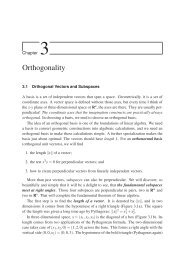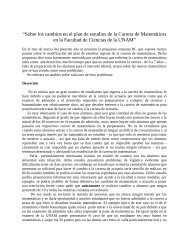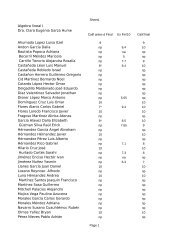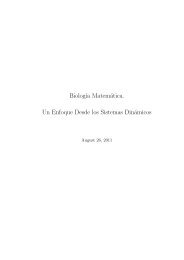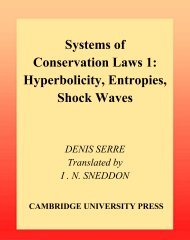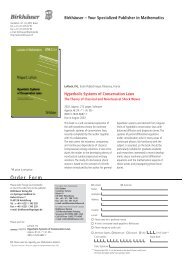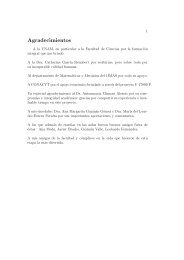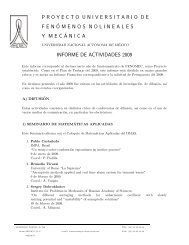An expansion method for non-linear Rayleigh waves - FENOMEC
An expansion method for non-linear Rayleigh waves - FENOMEC
An expansion method for non-linear Rayleigh waves - FENOMEC
Create successful ePaper yourself
Turn your PDF publications into a flip-book with our unique Google optimized e-Paper software.
P. Panayotaros / Wave Motion 36 (2002) 1–21 17Remark 6.5. Despite the presence of the cusps at the boundary, (6.15) implies that the lowest order elasticdisplacement v [0] (x 1 ,x 2 ) we obtain from the computed surface displacement is smooth inside the domain.We have also found a second type of sequences of Galerkin solutions that seem to converge weakly in L 2 (S 1 )to the trivial solution. A typical example is shown in Fig. 5(a)–(d). The particular example was found <strong>for</strong> the St.Venant-Kirchhoff material, but similar numerical solutions were also found <strong>for</strong> the other <strong>non</strong>-<strong>linear</strong>ities. In thesesequences, the surface displacement has small-scale oscillations that become finer decreasing slowly in amplitude,as well as spikes that become more and more concentrated as we increase the number of modes. Also, <strong>for</strong> thistype of numerical solutions the λ N i1do not seem to approach any limit. The λ N i1corresponding to the sequence ofsolutions of Fig. 5 is shown in Fig. 6(d).The accuracy of the numerical solutions presented is indicated by the vector of residuals ˜G N p (xN c , 1), p =1,...,N of the numerical solutions xcN of (6.15). Since, however, lim x→0 ˜G N (x, 1) = 0, it is more meaningful toconsider the vector of relative residuals [ ˜G N p ( ˜xN c , 1)]−1 ˜G N p (xN c , 1), p = 1,...,N, where ˜xN c has the same size asxc N , e.g. in practice we get ˜xN c by changing the sign of a few components of xc N . For the solutions correspondingto all the figures shown, all the components of the relative residuals were bounded by 10 −7 –10 −6 . These numbersFig. 5. (a) and (b) shows surface displacement and horizontal component v [0]1 (x 1, 0) of 160, 500 modes, respectively, St. Venant-Kirchhoff materialof (6.2); (c) and (d) shows surface displacement and vertical component v [0]1 (x 1, 0) of 160, 500 modes, respectively, St. Venant-Kirchhoff materialof (6.2) (multiply by 1.47).




